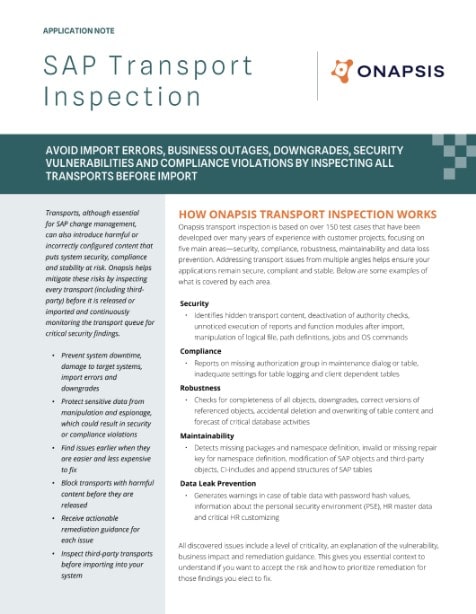DevSecOps for SAP S/4HANA Migrations
SAP S/4HANA migration projects are a huge undertaking involving your organization’s most mission-critical applications. Your business relies on these applications to function, so ensuring they stay secure, compliant, and available throughout migration and beyond is absolutely critical.





